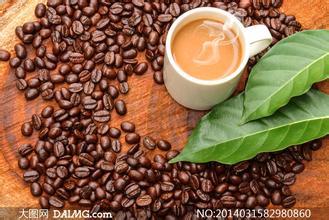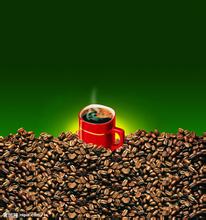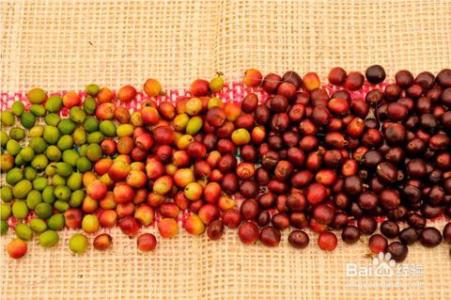Picture explanation of coffee bean washing method-the difference between sun-washed and washed coffee beans
Picture explanation of coffee bean washing method-the difference between sun-washed and washed coffee beans
1. Choose beans:
Put the harvested fruit in the water tank, and the ripe fruit will sink, while the unripe and overripe fruit will float up and can be removed.
2, dry:
Put the selected ripe fruit in the square and expose it to the sun for 5-6 days until it is fully dry. At this time, the fruit becomes dark brown and the moisture content is 13%.
3, shelling:
After drying, the peel becomes fragile and easy to fall off, and can be removed by machine. Farms run by enterprises usually have their own shelling factories, while small farms are processed by processing centers.
4, selection and grading:
Exquisite farms identify defective beans manually or by machine, pick them out and throw them away. Manual selection usually uses a transmission belt about 1 meter wide, with several female workers sitting on both sides visually picking out bad beans, and some good farms are even selected several times until defective beans are not seen. Machine selection rules use computers to identify defective beans, followed by a grading process that divides coffee beans into several quality grades according to established standards. Good coffee enters the selected coffee market, while bad coffee flows into the commercial coffee market.
1. Choose beans:
Put the harvested fruit in a water tank and soak for about 24 hours. At this time, ripe fruit will sink, while immature and overripe fruit will float up and can be removed.
2. Remove the pulp:
Use a machine to remove the peel and pulp, leaving only coffee beans wrapped in endocarp. At this time, there is a layer of mucous membrane on the outside of the beans, and the process of washing is to wash this layer of mucous membrane.
3, hair alcohol:
The adhesion of the mucous membrane is very strong and is not easy to remove. It must be placed in the slot for about 18-36 hours to make it alcohol and decompose the mucous membrane. There are two methods of fermentation, namely wet hair alcohol and dry hair alcohol, as the name implies, the former adds water, the latter does not add water. In the process of producing alcohol, the seeds and internal pulp will produce special changes, which is one of the steps that most affect the flavor of coffee. Some farms add hot water or alkanolins to speed up the production of alcohol, which has a negative impact on quality and is not popular with selected coffee lovers.
4, washing:
Farms that use the washing method must build washing ponds and be able to introduce an endless supply of running water. During the treatment, the finished beans are put into the pool and passed back and forth, using the friction of beans and the power of running water to wash the coffee beans until smooth and clean.

Important Notice :
前街咖啡 FrontStreet Coffee has moved to new addredd:
FrontStreet Coffee Address: 315,Donghua East Road,GuangZhou
Tel:020 38364473
- Prev

The brewing process from a coffee bean to a cup of coffee
The brewing process from a coffee bean to a cup of coffee is also a popular story about an Arab (or Egyptian) shepherd who found that his goat became more energetic after eating coffee fruit. He reported his findings to the abbot of the local monastery. The abbot conducted experiments on monks and found that this soup could keep them awake during night prayers.
- Next

Introduction of Starbucks Coffee Bean Grinding scale Variety production area treatment method taste Manor
Starbucks coffee bean grinding scale variety production area treatment method taste manor introduction. The mocha pot is also divided into the upper seat and the lower seat. But cooking is much simpler than siphoning. Fill the lower seat with water. It can't be filled. Just fill it up to 8 points. Then put the cylindrical bucket in the lower seat. Put the coffee powder in the small cylinder. After putting it away. Cover the coffee powder with a piece of filter paper. Cover
Related
- Guji coffee producing area of Guji, Ethiopia: Humbela, Shakiso, Wulaga
- What is the most expensive variety of Qiloso in BOP multi-variety group?
- How to store the coffee beans bought home?
- Why are Yemeni coffee beans so rare now?
- Ethiopian Sidamo all Red Fruit Sun Sun Santa Vini Coffee beans
- SOE is mostly sour? What does it mean? Is it a single bean? what's the difference between it and Italian blending?
- Is Italian coffee beans suitable for making hand-brewed coffee?
- How to choose coffee beans when making cold coffee? What kind of coffee beans are suitable for making cold coffee?
- Just entered the pit to make coffee, what kind of coffee beans should be chosen?
- Can only Japan buy real Blue Mountain Coffee? What are authentic Jamaican Blue Mountain coffee beans?

